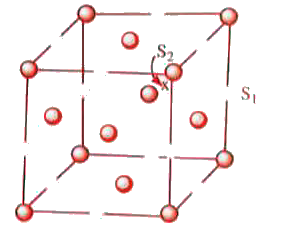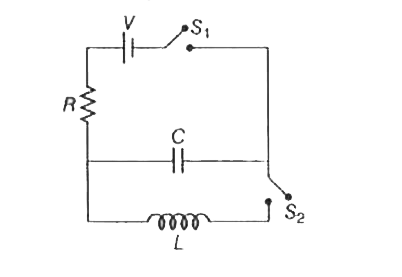In the structure given below, the sites S1 and S2 represent
 Solution in Telugu
Solution in Telugu
both octahedral voids
both tetrahedral voids
S1 - octahedral void S2 - tetrahedral void
S1 tetrahedral void S2 octahedral void
The correct Answer is:C
Step by step video, text & image solution for In the structure given below, the sites S_(1) and S_(2) represent by Chemistry experts to help you in doubts & scoring excellent marks in Class 12 exams.
Updated on:21/07/2023Topper's Solved these Questions
- SOLID STATEBook:AAKASH SERIESChapter:SOLID STATEExercise:OBJECTIVE EXERCISE -2
Explore 70 Videos
- SOLID STATEBook:AAKASH SERIESChapter:SOLID STATEExercise:OBJECTIVE EXERCISE -3
Explore 22 Videos
- SOLID STATEBook:AAKASH SERIESChapter:SOLID STATEExercise:SUBJECTIVE EXERCISE -3(VERY SHORT ANSWER QUESTIONS)
Explore 5 Videos
- REVISION EXERCISE Book:AAKASH SERIESChapter:REVISION EXERCISE Exercise:COMPLEX COMPOUNDS
Explore 47 Videos
- SOLIDS STATEBook:AAKASH SERIESChapter:SOLIDS STATEExercise:PRACTICE EXERCISE
Explore 63 Videos
Similar Questions
A metal crystallises in a simple cubic unit cell of edge length 6.22Å. The radius of the metal atom
View SolutionWith which one of the following elements silicon should be doped so as to give p-type sem iconductor?
View SolutionExplain ferromagnetic solid materials ?
View SolutionIn which of the following complexes the metal ion is in zero oxidation state ?
View SolutionWhich of the following is considered as true amorphous solid
View SolutionIf S_(1),S_(2),S_(3) be respectively the sums of n,2n and 3n terms of a G.P.,prove that S_(1)(S_(3)-S_(2))=(S_(2)-S_(1))^(2)
View SolutionIf S1,S2,S3 be respectively the sums of n,2n,3n terms of a G.P., then prove that (S1)2+(S2)2=S1(S2+S3) .
View SolutionLet S_(1),S_(2),...,S_(101) be consecutive terms of an AP.If (1)/(S_(1)S_(2))+(1)/(S_(2)S_(3))+...+(1)/(S_(100)S_(101))=(1)/(6) and S_(1)S_(101)=50 then |S-S_(101)| is equal to
View SolutionIn the structure given below, the sites S_(1) and S_(2) represent
View SolutionIf S1,S2,S3be respectively the sum of n,2n and 3n terms of a GP, then S1(S3−S2)(S2−S1)2 is equal to
View Solutionयदि गु० श्रे० के n,2n,3n पदों का योग क्रमशः S1,S2,S3 हों तो सिद्ध करें की S21+S22=S1(S2+S3).
View SolutionIf 1,2,3….are first terms, 1,3,5….are common differences and S1,S2,S3…….are sums of n terms of given p AP's, then S1+S2+S3+…….+Sp is equal to
View SolutionIn the circuit given below, the capacitor C is charged by closing the switch S1 and opening the switch S2. After charging, the switch S1 is opened and S2, is closed, then the maximum current in the circuit

View SolutionThe sets S1 and S2 are given by
View SolutionIf S1,S2,S3 be respectively the sums of n, 2n, 3n, terms of a G.P., then prove that S1(S3−S2)=(S2−S1)2.
View Solution
